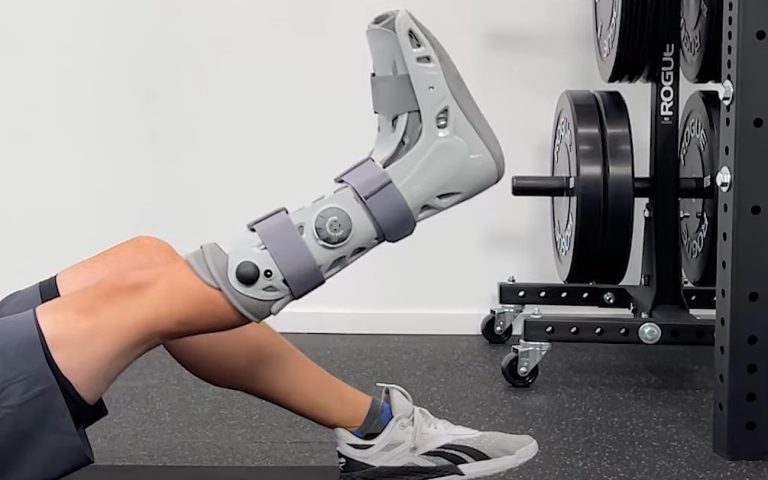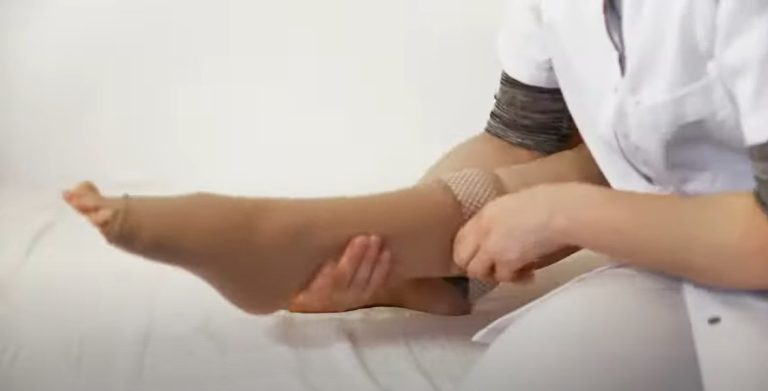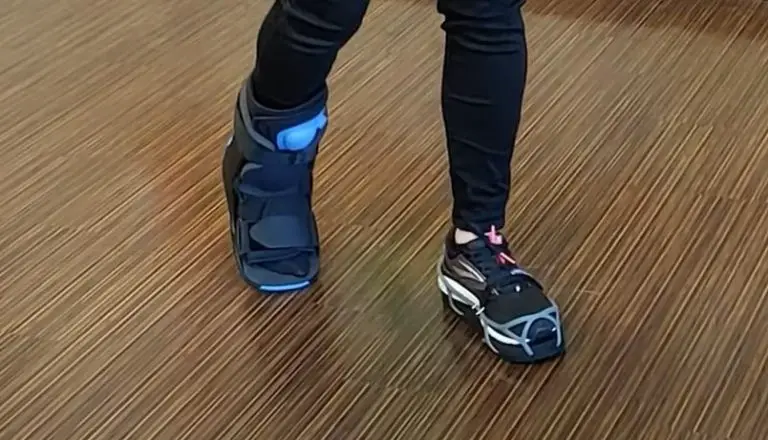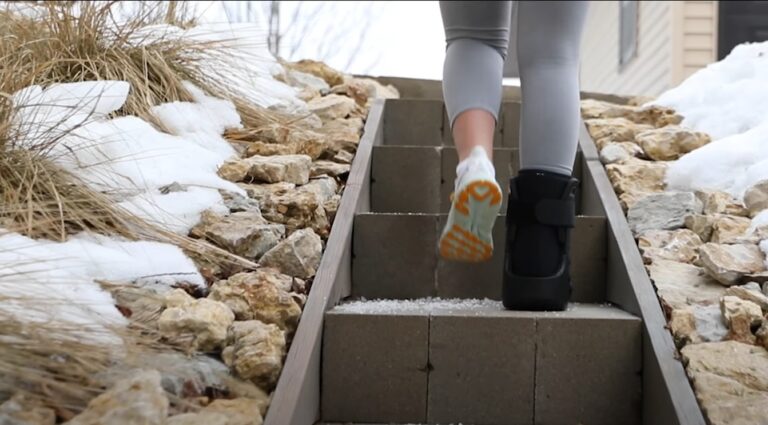When to Stop Wearing a Walking Boot: A Guide to Healing
Walking boots are commonly prescribed by healthcare professionals to assist in the healing process of various foot and ankle injuries or conditions.
These specially designed boots provide support, stability, and protection, allowing individuals to bear weight while minimizing strain on the injured area.
However, knowing when to stop wearing a walking boot is crucial for a successful recovery and a return to normal activities. In this article, we will explore the factors to consider and the signs that indicate it’s time to transition out of a walking boot.
Understanding the Purpose of a Walking Boot
Walking boots are typically recommended for a range of injuries, including sprains, fractures, tendonitis, and post-surgical recovery. They are designed to immobilize the injured area, reduce weight-bearing stress, and promote proper alignment.
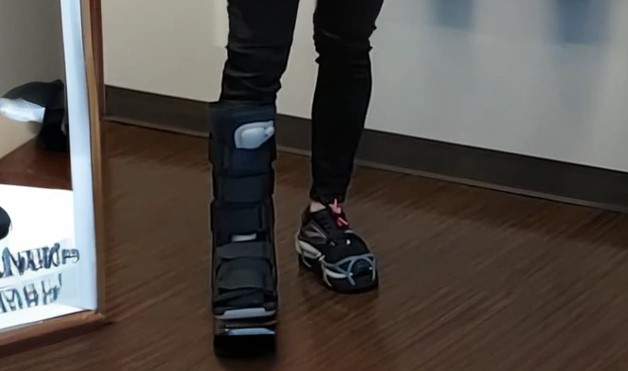
By limiting movement and providing support, walking boots aid in the healing process, prevent further damage and improve overall recovery outcomes.
Factors Influencing the Duration of Walking Boot Use
The length of time an individual needs to wear a walking boot can vary depending on several factors:
The severity of the injury or condition: More severe injuries may require a longer period of immobilization and protection.
Recommendations from the healthcare provider: Healthcare professionals assess the specific injury, monitor healing progress, and provide guidance on when to discontinue using the walking boot.
Individual healing progress and recovery timeline: Each person’s body heals at its own pace, and factors such as age, overall health, and adherence to treatment can impact the duration of boot usage.
Compliance with treatment and rehabilitation protocols: Adhering to prescribed treatment plans, including physical therapy exercises and rest, can accelerate healing and reduce the time spent in a walking boot.
Signs Indicating the Time to Stop Wearing a Walking Boot
While the exact duration of walking boot use may vary, certain signs suggest it may be time to transition out of the boot:
- Absence of pain during weight-bearing activities: The injured area should no longer exhibit pain or discomfort when walking or putting weight on it.
- Reduced swelling and inflammation: Swelling and inflammation should significantly decrease or subside entirely.
- Improved range of motion and strength: The injured area should regain a range of motion comparable to the uninjured side, and strength should be restored to a functional level.
- Stable or healed fractures or injuries confirmed by medical evaluation: X-rays or other diagnostic tests may be necessary to confirm the healing progress and determine if the walking boot can be discontinued.
- Gradual transition to regular footwear: As the healing progresses, the individual can gradually transition to more supportive regular footwear, such as athletic shoes, under the guidance of a healthcare professional.
Do you have to wear a walking boot all the time?
No, wearing a walking boot all the time is not always necessary. The duration and frequency of wearing a walking boot depend on the specific injury or condition, as well as the recommendations of your healthcare provider.
In some cases, you may be advised to wear the boot only during weight-bearing activities or when walking longer distances, while allowing some periods of rest without the boot.
However, in more severe cases or during the initial stages of recovery, your healthcare provider may recommend wearing the boot continuously to provide maximum protection and support to the injured area.
It is important to follow the instructions and guidance provided by your healthcare professional to ensure proper healing and recovery.
Medical Evaluation and Consultation
Regular follow-up appointments with a healthcare provider are essential throughout the recovery process. These appointments allow for evaluation of the healing progress and adjustment of the treatment plan as needed.
Healthcare professionals may employ various evaluation methods, such as physical examinations, imaging tests, or functional assessments, to determine when it is appropriate to stop wearing the walking boot.
Transitioning Out of a Walking Boot
When transitioning out of a walking boot, it is crucial to do so gradually to prevent re-injury. The following steps can help facilitate a smooth transition:
Introduction to weight-bearing exercises and physical therapy: Physical therapy exercises help improve the strength, flexibility, and stability of the injured area.
Gradual increase in weight-bearing activities: Initially, weight-bearing activities should be limited and gradually increased over time as tolerated.
Recommendations for supportive footwear or orthotics: A healthcare professional may suggest wearing supportive footwear or using orthotic inserts to provide ongoing protection and stability during the transition phase.
Precautions and guidelines for preventing re-injury: Following the instructions of healthcare professionals regarding activity modification and avoiding high-impact or strenuous activities is crucial to prevent re-injury.
Potential Challenges and Risks
Discontinuing the use of a walking boot can present challenges and risks that need to be addressed:
Re-injury risks associated with premature boot removal: If the injury has not fully healed, removing the boot too soon can increase the risk of reinjury or delayed healing.
Psychological factors and fear of discontinuing boot usage: Individuals may develop a psychological reliance on the walking boot and fear removing it, even after it is no longer necessary. Open communication with healthcare providers and proper education can help alleviate these concerns.
Addressing concerns and seeking professional advice: If there are uncertainties or concerns regarding the progression of healing, it is essential to consult a healthcare professional promptly to receive appropriate guidance.
Conclusion
Knowing when to stop wearing a walking boot is crucial for optimal healing and recovery. The decision should be based on a combination of factors, including the severity of the injury, healthcare provider recommendations, individual healing progress, and a lack of pain, swelling, and inflammation.
Regular medical evaluation and consultation are essential throughout the recovery process. Remember, proper timing for discontinuing the walking boot promotes a smooth transition back to regular activities and reduces the risk of re-injury. Always consult a healthcare professional for personalized advice tailored to your specific condition.

